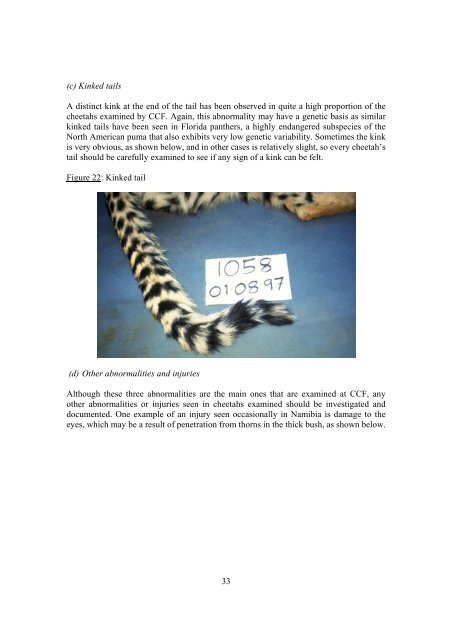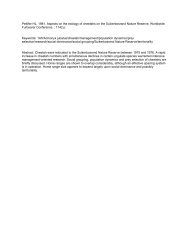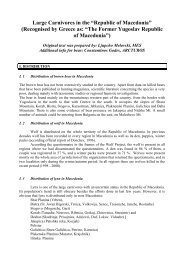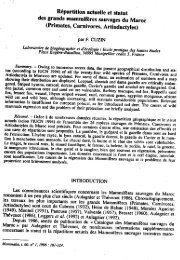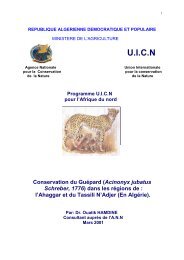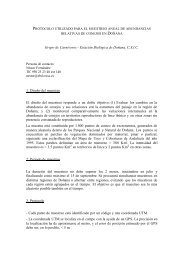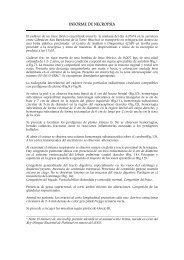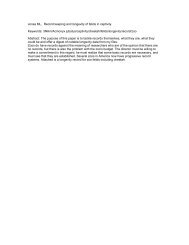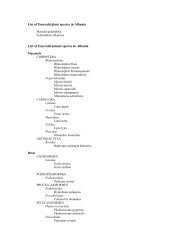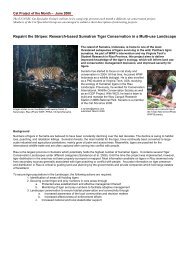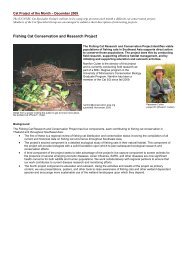cheetah capture and immobilisation handbook - Cat Specialist Group
cheetah capture and immobilisation handbook - Cat Specialist Group
cheetah capture and immobilisation handbook - Cat Specialist Group
You also want an ePaper? Increase the reach of your titles
YUMPU automatically turns print PDFs into web optimized ePapers that Google loves.
(c) Kinked tails<br />
A distinct kink at the end of the tail has been observed in quite a high proportion of the<br />
<strong>cheetah</strong>s examined by CCF. Again, this abnormality may have a genetic basis as similar<br />
kinked tails have been seen in Florida panthers, a highly endangered subspecies of the<br />
North American puma that also exhibits very low genetic variability. Sometimes the kink<br />
is very obvious, as shown below, <strong>and</strong> in other cases is relatively slight, so every <strong>cheetah</strong>’s<br />
tail should be carefully examined to see if any sign of a kink can be felt.<br />
Figure 22: Kinked tail<br />
(d) Other abnormalities <strong>and</strong> injuries<br />
Although these three abnormalities are the main ones that are examined at CCF, any<br />
other abnormalities or injuries seen in <strong>cheetah</strong>s examined should be investigated <strong>and</strong><br />
documented. One example of an injury seen occasionally in Namibia is damage to the<br />
eyes, which may be a result of penetration from thorns in the thick bush, as shown below.<br />
33


